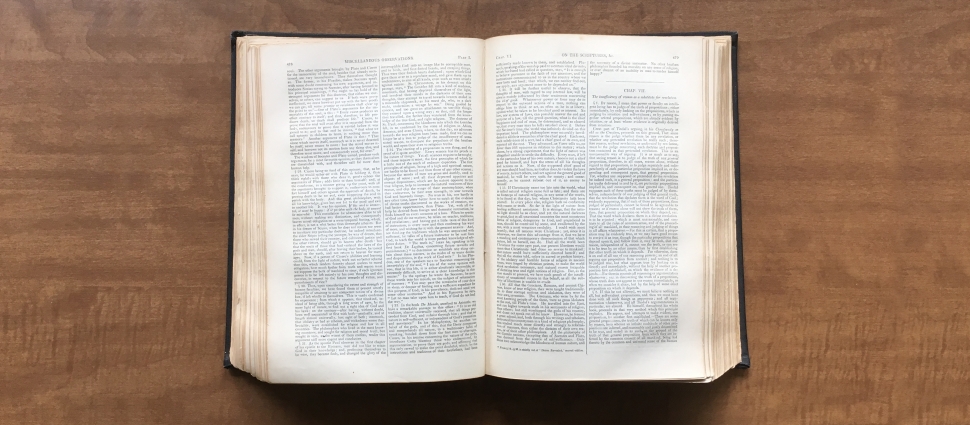An Introduction to German Pietism

September 9, 2013
Douglas H. Shantz, An Introduction to German Pietism: Protestant Renewal at the Dawn of Modern Europe. Baltimore, MD: Johns Hopkins University Press, 2013, 520 pp. $32.00
"The ideologies and institutions of modernity are...the tangled continuation, development, and extension of late medieval and early modern innovations that remain influential in the present." (1) In spite of the controversial nature of Brad Gregory's recent The Unintended Reformation, these words could not ring more true, and yet we find set before us a "tangled continuation" of church histories that absolve themselves of accounting for post-Reformation Continental Protestantism, as if John Calvin had personally handed his Institutes to Friedrich Schleiermacher and wished him well on his journey. As a result, modern Protestantism is oftentimes guilty of avoiding its inherited interpretation of the Reformers and their thought. Can we read Luther or Zwingli, Bucer or Bullinger, without hearing the later theological intonations of Johann Arndt, Johannes Coccejus, or Philipp Jakob Spener? The names of the Lutheran Pietist Spener and his Reformed counterpart Theodor Undereyck may be foreign to our ears, but their emphasis on rebirth, renewal, small group meetings, and [post]millennialism are not. In fact, they speak of a major development in Protestantism.
Douglas Shantz offers us in his recent An Introduction to German Pietism: Protestant Renewal at the Dawn of Modern Europe an important step in understanding twentieth-century evangelicalism's complex claims to the theological impulses of the Reformation. He writes, "German Pietism represents a key, but forgotten, strand of the religious DNA of North American Christianity. Early European settlement on this continent is not just the story of Puritans and immigration from England" (p. 1). Alongside its English and Dutch counterparts, German Pietism acted as one of the main variants of Protestantism that communicated Reformation thought through the voice of seventeenth and eighteenth century experientialism. Shantz's volume represents the most recent attempt in English-speaking scholarship to draw attention to this European religious movement. Since F. Ernest Stoeffler's influential two-volume work (1965/1973), which associated the origins of Pietism with the English Puritan William Perkins, there has been little progress outside of Germany in bringing Pietism into the limelight of modern church historiography. Moreover, recent introductions to Pietism have continued Stoeffler's overreaching definition of the movement (e.g. Carter Lindberg, The Pietist Theologians). Shantz, on the other hand, provides us with an introduction of Pietism that reflects earlier efforts by Johannes Wallmann, Hans Schneider, and other German church historians to see Pietism more narrowly as a movement that begins in Frankfurt during the latter half of the seventeenth century and develops in "churchly" (kirchlich) and "radical" (radikal) directions. He defines Pietism as that movement which "introduced a new paradigm to traditional German Protestantism, one that encouraged personal renewal and new birth, conventicle gatherings for Bible study and mutual encouragement, social activism and postmillennialism, and ecumenical cooperation" (p. 7).
Divided into four parts, An Introduction to German Pietism begins with a short section entitled "The Setting and Inspiration for German Pietism" devoted to the historical context of Pietism. In it Shantz briefly addresses some of the bends and turns in the flow of seventeenth-century Lutheranism and Reformed thinking, as well as the impact of events like the Thirty Years War. From there we begin a journey to three central cities in the development of Pietism: Frankfurt, Leipzig, and Halle. It is in this second section that we meet the fathers of churchly and radical Pietism, Spener and Johann Jakob Schütz, who together encouraged a group meeting outside of regular worship services and who would end up separating from each other after Schütz's radicalizing. From Frankfurt we are led to Leipzig and Halle, where Pietism in its radical forms was stalled and in its churchly form, under the guidance August Hermann Francke, was institutionalized. With the death of Francke in 1727, however, Shantz abruptly ends our geographical journey, and we are left wondering whether it would have been a good idea to spend a few more days traveling to places like Berlin, where Spener spent the latter half of his life, or Hernnhut, where Count Nikolaus Ludwig von Zinzendorf and the Moravians found their early home.
Instead, Shantz stops the car and has us taxi through topics important to Pietism (e.g. biblicism and missions) and to recent research on the movement (e.g. radicalism and gender studies). Shantz's own interest in radical Pietism evidences itself more and more through the final two sections of the book. This is, in fact, the strength of Shantz's volume: it portrays to the reader the influence and importance of radical Pietism in the development of the movement and later denominationalism. He not only introduces us to Schütz as the "founder" of Pietism (p. 3), and in doing so goes further than Andreas Deppermann's claim that Schütz was an "initiator and co-founder" alongside of Spener, but he also follows Wallmann's lead and calls radical Pietism the earlier and "more genuine form" of Pietism (pp. 151, 177). Of the important contributions Shantz makes to Pietism studies is his typology of the radicals. He suggests that we see these men and women under the rubric of four models: the Spiritualist-Alchemist, the Millennialist, the Conventicle, and the Sect (p. 154). Structuring his analysis this way, Schantz offers a further way of classifying radical Pietists which is a point upon which future research can build.
Yet it is Shantz's concern for the radicals that leaves us a bit lost on our way. Several important figures and events are sacrificed for the sake of focusing on radical tendencies in Pietism. Should Zinzendorf and the Moravians be relegated to a chapter on missions or Württemberg Pietism to a chapter on biblicism (reductionistic classifications that we do not find in the works of Wallmann or Peter Schickentanz)? What should we make of Shantz's silence on important Lutheran figures like Gotthilf August Francke or the Halle trained Heinrich Melchior Mühlenberg (founder of American Lutheranism), not to mention prominent Reformed Pietists like Friedrich Adolph Lampe? More troublesome is how Reformed Pietism is seemingly dismissed to the first section, as if it should be seen as something other than the Pietism addressed in the following three sections. To be sure, these problems can be explained by the shortcomings in current Pietism research and Shantz's own effort to avoid providing an encyclopedic work, but then we are left wondering why he introduces other names like the influential Ernst Christoph Hochmann von Hochenau without providing any sense of their specific role in the development of Pietism.
These shortcomings are symptomatic of a work that begins with a very promising underlying theme (using towns and cities as historical reference points) only to change directions and become topical. Without question, Shantz does a commendable job bringing us into the twenty-first century of Pietism scholarship and offering us an appendix of source material in English. For this alone it should find its place on our bookshelves next to the works of W.R. Ward and Jonathan Strom. Yet at the same time it is held back by its imprecision.
"Pietism and church music have been characterized as the last two great creations of German Protestantism." (2) This claim made by German historian Carl Hinrichs - and introduced in slightly different wording by Shantz - confronts us with the reality that we still know very little of post-Reformation Continental Protestantism. An Introduction to German Pietism ought to serve well in helping us determine whether Hinrichs's judgment was right in giving Pietism such a prominent stake in church history. Shantz is to be applauded for drawing us out of our common assumptions about Pietism and furthering a field of research that holds the key to understanding many of the developments in evangelicalism worldwide.
Peter James Yoder is Visiting Professor of Religion Berry College. Yoder received his doctorate from the University of Iowa and is currently working on a monograph on the theology of August Hermann Francke
Notes:
1. Brad S. Gregory, The Unintended Reformation: How a religious revolution secularized society (Cambridge, MA: Harvard University Press, 2012), p. 7.
2. Carl Hinrichs, Preußentum und Pietismus (Göttingen: 1971), 17.




